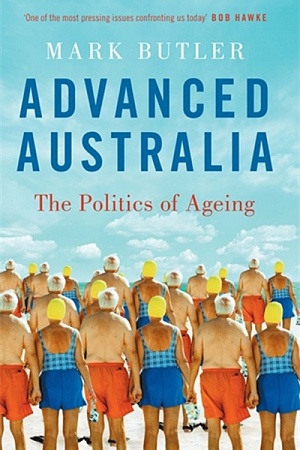Skin Deep: The inside story of our outer selves
Vintage Books, $34.99 pb, 325 pp
The circle of life
In Skin Deep: The inside story of our outer selves, Australian writer Phillipa McGuinness gathers some impressive facts about skin. A square centimetre contains, among other things, six million cells, two hundred pain sensors, and one hundred sweat glands. The skin of an individual weighing seventy kilograms ‘covers two square metres and weighs five kilograms’. A YouTube channel where you can watch a dermatologist popping pimples has amassed more than three billion views. The beauty and personal care industry accrues half a trillion dollars in annual sales, while one major cosmetics company now spends seventy-five per cent of its billion-dollar advertising budget on influencers.
As McGuinness explains in an occasionally nebulous overview of its biology, skin comprises three primary layers: the exterior layer of the epidermis, the dermis beneath it, and beneath that the subcutaneous tissue of the hypodermis. Further, skin undergoes a continual process of death and renewal, the cellular structure of the skin recreating itself every month as the dead cells of the outer layer shed themselves and the layer beneath moves to the surface to form the new epidermis, ‘the circle of life playing out on your skin’.
Noting that skin is the largest organ of the human body (although some argue that the lining of the intestines is the larger organ by virtue of its surface area), McGuinness emphasises the dynamic nature of skin and its fundamental role in our sense of touch, our immune system, and our evolution. For example, the relative lack of hair on human skin fostered both the development of our ‘acute cutaneous sensory system’ and our ability to sweat, thus allowing human beings to ‘regulate our internal temperatures’ and spread across the globe, ‘[honing] skills of cognition and coordination’ along the way.
There are chapters examining dermatology, cosmetic/plastic surgery, sunbathing, skin cancer, skin disorders (for example, psoriasis, eczema, and acne), tattoos, and the urge to touch and be touched (‘Skin as comfort. Skin as friendship’). McGuinness blends anecdotes, interviews, and personal observations with secondary scientific sources, and her personable style results in a book that often reads like a lively conversation between friends.
 Phillipa McGuinness (photograph via Penguin Australia)
Phillipa McGuinness (photograph via Penguin Australia)
Notwithstanding, what quickly becomes apparent is that McGuinness’s understanding of skin – its biology as well as its historical, cultural, and metaphorical implications – is often only one step ahead of the reader’s. Skin Deep is more a chronicle of McGuinness’s peripatetic research than an analysis of her findings. As such, any reader wanting a deeper exploration of the biology, dermatological history, or politics of skin may find it more profitable to go directly to one of several books on which McGuinness regularly draws: for example, Nina Jablonski’s Skin: A natural history (2006), Monty Lyman’s The Remarkable Life of Skin: An intimate journey across our surface (2018), or Adam Rutherford’s How to Argue With a Racist: History, science, race and reality (2020).
In The Year Everything Changed: 2001 (2018) – a spirited account of Australian politics and culture in 2001, and a book anchored by both the global convulsions of that year and the death of her son – McGuinness demonstrated her capacity to examine complex events and themes, and to draw perceptive connections. However, in Skin Deep the absence of a central narrative or thesis binding together her disparate observations and facts culminates in writing that seems more haphazard than considered.
McGuinness recognises that skin can be both ‘[c]oncealing and revealing. Our surface and our depths’, and that there are few of us who aren’t conscious of a gap ‘between our exterior and our interior selves’, but she struggles to articulate the significance of the rift between what skin is and how it is read.
Where McGuinness comes close to realising her aim of getting ‘under the skin of skin’ is in her delineation of the relationship between skin colour and racism. Drawing on Rutherford’s reflection that, had genetic science predated anthropology, the opportunity to categorise and colonise people based on their skin colour would have been curtailed, McGuinness stresses the absence of any link between skin colour and race; that race is ‘an idea we ascribe to biology and apply through culture’. Consequently, in many societies skin colour has become a ‘predictor of inequality, of struggle’.
There is intensity also in McGuinness’s scrutiny of ‘skincare’ and ‘wellness’, her fascination, even obsession, with the beauty industry – and her own ambiguous relationship with it – apparent from the first pages of Skin Deep, the prologue given over to an account of an eighteen-minute make-up tutorial posted online by US Congresswoman Alexandria Ocasio-Cortez. Here, McGuinness pivots between admiring Ocasio-Cortez’s ‘Femininity has power’ mantra and questioning whether paying so much attention to her appearance ‘undermine[s] a credible woman’s status and legitimacy’, a tension that defines McGuinness’s attitude to the beauty industry throughout Skin Deep. She rails against the way the beauty industry ‘target[s] our insecurities and manipulate[s] us’, and the rampant body dysmorphia that is – with cosmetic and surgical help – churning out a generation of young women who look uncannily alike, yet ends her investigation of the industry with a ‘measured acceptance of what we do for beauty’, a resignation that, given the disquietude preceding it, is not entirely convincing.
‘I see this obsessive beauty culture for what it is,’ McGuinness writes. ‘It identifies my subjectivities, inadequacies and vulnerabilities, and makes me pay to make them go away, while simultaneously consolidating and augmenting them.’ Had McGuinness interrogated more keenly her own unresolved relationship with the beauty industry – that place where the biology of skin intersects with the ‘forces of commerce, sexuality, desire, art’ – Skin Deep may have found the narrative it is lacking.











Leave a comment
If you are an ABR subscriber, you will need to sign in to post a comment.
If you have forgotten your sign in details, or if you receive an error message when trying to submit your comment, please email your comment (and the name of the article to which it relates) to ABR Comments. We will review your comment and, subject to approval, we will post it under your name.
Please note that all comments must be approved by ABR and comply with our Terms & Conditions.